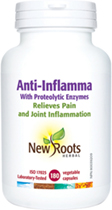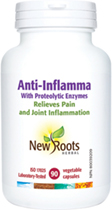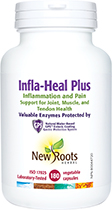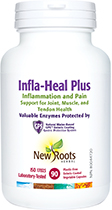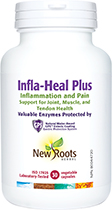From Gout to Glory: Rising Above Joint Pain
Gout is a type of inflammatory arthritis characterized by sudden severe-onset joint pain, usually just one joint at a time. The big toe is most frequently affected, with “gout attacks” starting suddenly, often in the middle of the night. Affected joints are often red, hot, swollen, and incredibly painful. Gout flares are typically most severe for the first few hours to half-day, then subside slowly over the next few days to weeks.[1]
Gout is considered the most common type of inflammatory arthritis in Canada, by one estimate affecting approximately 1 million Canadians; by another estimate, affecting between 2 and 4% of the population. Men are more likely to be affected than women (4% v. 1% of the population), and the frequency of gout increases with age.[2]
Gout is associated with increased blood uric-acid level—as it increases, some uric acid migrates into joints and forms sharp, needle-like crystals. It builds up within the joints, then the immune system attempts to clear it, leading to a gout attack, which subsides with time as the immune system’s attack declines. However, these attacks are not completely successful at clearing the uric acid crystals from the joints, so attacks often reoccur and, over time, can lead to permanent joint damage.[3] Therefore, controlling blood uric-acid levels and preventing the formation of new crystals are the method of choice to prevent and treat gout.
As with most things, there are many contributing factors to the development and frequency of gout attacks; some can be easily changed through diet or lifestyle choices, while others are more difficult to modify. The most significant factor is genetics—how much uric acid a person’s body creates or how much their kidneys excrete can be genetically dependent.[4] The use of certain medications can also increase the risk of gout (especially diuretics, low-dose aspirin, and niacin taken in large amounts).[5], [6] The presence of other health conditions—such as kidney disease, high blood pressure, diabetes, obesity, metabolic syndrome, and insulin resistance—can also contribute to the development of gout. Ensuring those health conditions are well-managed is thought to help reduce the risk of gout or the frequency and severity of attacks.[7]
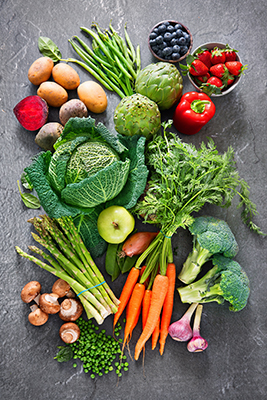 Diet and lifestyle factors may also predispose someone to gout, specifically dehydration, alcohol consumption, fructose consumption, and a high-purine diet. Purines are a type of nucleic acid found in some foods, especially organ meats, red meat, and certain types of seafood (anchovies, sardines, mussels, trout, and tuna).[8], [9], [10], [11] Ensuring adequate water intake and reducing consumption of alcohol (especially beer) and sugar-sweetened beverages (especially soda), and reducing dietary intake of purines may help reduce gout frequency and severity.[12], [13]
Diet and lifestyle factors may also predispose someone to gout, specifically dehydration, alcohol consumption, fructose consumption, and a high-purine diet. Purines are a type of nucleic acid found in some foods, especially organ meats, red meat, and certain types of seafood (anchovies, sardines, mussels, trout, and tuna).[8], [9], [10], [11] Ensuring adequate water intake and reducing consumption of alcohol (especially beer) and sugar-sweetened beverages (especially soda), and reducing dietary intake of purines may help reduce gout frequency and severity.[12], [13]
Maintaining an anti-inflammatory diet may also assist—indeed, anti-inflammatory diets are associated with reduced pain and improved health outcomes for many health conditions, not just gout.[14] The key features of an anti-inflammatory diet include high intake of fruits and vegetables, fish, nuts and seeds, whole grains, and legumes, with minimal intake of sugar-rich foods, refined carbohydrates (especially baked goodies), trans fats and saturated fats.[15], [16] Some foods thought to specifically help with gout include cherries or cherry juice (especially tart cherry juice) as well as apples, celery, and bananas.[17], [18]
Supplementing with certain nutrients or herbal products may also help prevent or reduce gout-attack frequency and severity. Specific nutrients currently being researched include omega‑3 fatty acids, vitamin C, and vitamin B9 (also known as folate), although recommended dosages for gout vary widely.[19]
Anti-inflammatory herbs that may help reduce joint pain associated with gout (along with other types of arthritis) include turmeric, devil’s claw, hibiscus, and ginger.[20], [21] These herbs appear to inhibit or at least reduce the effectiveness of cyclooxygenase‑2 (COX2), an enzyme involved in proinflammatory signaling (similar to how ibuprofen and aspirin work).[22], [23], [24], [25] Bromelain is another anti‑inflammatory product, but its specific mechanism of action on joint pain and inflammation is unclear.[26] Methylsulfonylmethane (MSM) may also be worth considering, as it is often used for arthritis, especially osteoarthritis, to help reduce joint damage and inflammation.[27]
As you can see, there are many nondrug options for gout, and it is through discussion with your local health-care practitioner that a personalized plan, specific to you and your unique health needs, can be developed with the goal of optimal success, for gout or any other health challenges you may be facing.
 Dr. Katie DeGroot, BSc, ND, MScN
Dr. Katie DeGroot, BSc, ND, MScN
Dr. DeGroot is an Alberta-registered naturopathic doctor who also holds a Master of Science in Nutrition. She offers nutritionally focused care and has a special interest in digestive issues and supportive mental health-care.
drkatiedegroot.ca
References
[1] Mayo Clinic. Gout. https://www.mayoclinic.org/diseases-conditions/gout/symptoms-causes/syc-20372897. Published 2022‑11‑16. Accessed 2023‑05‑01.
[2] Arthritis Society Canada. Risk factors and gout attacks. https://arthritis.ca/about-arthritis/arthritis-types-(a-z)/types/gout/risk-factors-and-gout-attacks. Revised 2022‑10. Accessed 2023‑04‑30.
[3] Arthtitis Society Canada, Risk factors and gout attacks.
[4] Reginato, A.M., D.B. Mount, I. Yang, and H.K. Choi. “The genetics of hyperuricaemia and gout.” Nature Reviews. Rheumatology, Vol. 8, No. 10 (2012): 610–621.
[5] Centers for Disease Control and Prevention. Gout. https://www.cdc.gov/arthritis/basics/gout.html. Reviewed 2020‑07‑20. Accessed 2023‑05‑01.
[6] National Institute of Arthritis and Musculoskeletal and Skin Diseases. Gout. https://www.niams.nih.gov/health-topics/gout. Reviewed 2020‑02. Accessed 2023‑04‑30.
[7] Reginato et al, “The genetics of hyperuricaemia and gout.”
[8] Centers for Disease Control and Prevention. Gout.
[9] National Institute of Arthritis and Musculoskeletal and Skin Diseases. Gout.
[10] Arthritis Foundation. Gout. https://www.arthritis.org/diseases/gout. Accessed 2023‑04‑30.
[11] Arthritis Foundation. Gout and supplements: What you need to know. https://www.arthritis.org/health-wellness/treatment/complementary-therapies/supplements-and-vitamins/gout-and-supplements-what-you-need-to-know. Accessed 2023‑05‑01.
[12] Arthritis Foundation, Gout.
[13] Arthritis Foundation, Gout and supplements: What you need to know.
[14] NatMed. Low Purine Diet. https://naturalmedicines.therapeuticresearch.com/databases/health-wellness/professional.aspx?productid=1373 (login required). Accessed 2023‑05‑01.
[15] NatMed. Low purine diet.
[16] NatMed. Mediterranean Diet. https://naturalmedicines.therapeuticresearch.com/databases/health-wellness/professional.aspx?productid=1391 (login required). Accessed 2023‑05‑01.
[17] NatMed. Low purine diet.
[18] NatMed. Effectiveness Checker (Gout). https://naturalmedicines.therapeuticresearch.com/tools/effectiveness-checker.aspx?q=gout&page=1 (login required). Accessed 2023‑05‑01.
[19] NatMed. Effectiveness Checker (Gout).
[20] Arthritis Foundation, Gout and supplements: What you need to know.
[21] NatMed. Effectiveness Checker (Gout).
[22] NatMed. Turmeric. https://naturalmedicines.therapeuticresearch.com/databases/food,-herbs-supplements/professional.aspx?productid=662 (login required). Accessed 2023‑05‑01.
[23] NatMed. Ginger. https://naturalmedicines.therapeuticresearch.com/databases/food,-herbs-supplements/professional.aspx?productid=961 (login required). Accessed 2023‑05‑01.
[24] NatMed. Hibiscus sabdariffa. https://naturalmedicines.therapeuticresearch.com/databases/food,-herbs-supplements/professional.aspx?productid=211 (login required). Accessed 2023‑05‑01.
[25] NatMed. Devil’s Claw. https://naturalmedicines.therapeuticresearch.com/databases/food,-herbs-supplements/professional.aspx?productid=984 (login required). Accessed 2023‑05‑01.
[26] NatMed. Bromelain. https://naturalmedicines.therapeuticresearch.com/databases/food,-herbs-supplements/professional.aspx?productid=895 (login required). Accessed 2023‑05‑01.
[27] NatMed. Methylsulfonylmethane (MSM). https://naturalmedicines.therapeuticresearch.com/databases/food,-herbs-supplements/professional.aspx?productid=522 (login required). Accessed 2023‑05‑01.

 Stores
Stores
